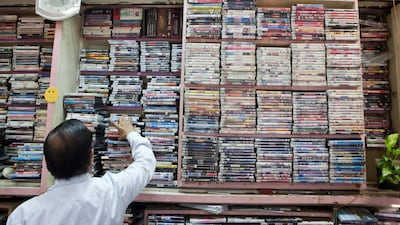Hari Chand Aneja has contributed many columns to The National since he began writing for the Opinion section in 2011. Sadly, he died, aged 95, on August 28. Shortly before he passed away, he contributed this piece of writing to the paper:
"To ask or not to ask?" The question nagged me. Would Roshan be offended if I asked him to run an errand for me on his forthcoming trip to London? Would I be testing my friendship with him? I tossed the issue around for a few days and finally asked him whether he would be able to pick up a copy of Citizen Kane for me. "Sure, no issue at all," he responded. I was relieved.
In the early 1980s, it was impossible to buy video cassettes of English-language movies in India. So if I or any friends travelled abroad, a major item on the shopping list was good films.
Over the decades I was able to collect a few hundred definitive movies covering drama, romance, history and even comedy. On a rainy day these video cassettes came to our rescue and I spent many pleasant hours watching classic films.
I saw the world through classic Hollywood films like Gone with the Wind and Guns of Navarone. These films exposed us to foreign culture, habits and pronunciations. Apart from being entertaining, they were also educational.
Then came the DVD revolution. All the movies I so zealously collected had been reproduced in round, shiny discs. They were supposed to have improved clarity and a longer life. My family embarked on a new odyssey to procure these shiny DVDs. They were also more easily available in India and we did not have to seek any favours to source them.
Though our home was invaded by the shiny new discs, I held on to my video cassettes. I did not have the heart to part with them. So my precious video cassettes lay in cartons in a corner of the house.
Over the last decade the shiny DVDs are being nudged aside by blu-ray discs, which are supposed to deliver higher resolution pictures. Amazon Prime has percolated into Indian homes now. Netflix offers hundreds of films to Indian viewers with a few clicks.
Finally, I had to take a call on what to do with my 400 video cassettes. Nobody wanted them. We called the local “kabaddi” (junk-dealer). He said the collection was useless. He offered to buy the cassettes at a price of Rs 5 (about 30 fils) per kilogram. After weighing some cassettes, he announced, “You have around 400 cassettes and 10 of them make a kilogram. So for the 40 kilograms of video cassettes, I can pay you about Rs 200 (about Dh11)”.
I was despondent. My cherished collection was gone. I had spent a fortune in goodwill and money to collect those coveted cassettes. But then I reasoned, technology has to advance.
Follow The National's Opinion section on Twitter

